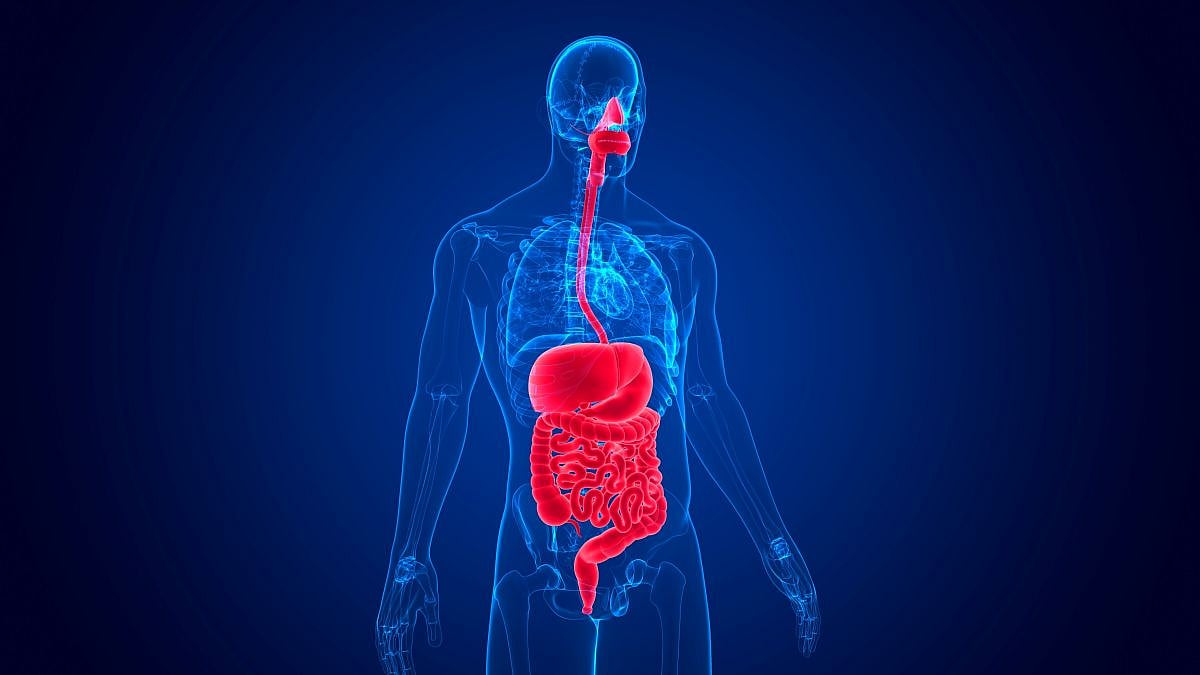By Beth Gilbert HealthDay Reporter
Digestive Disease Week, the annual meeting sponsored by the American Association for the Study of Liver Diseases, American Gastroenterological Association, American Society for Gastrointestinal Endoscopy, and Society for Surgery of the Alimentary Tract, was held from May 3 to 6 in San Diego, drawing more than 13,000 participants from around the world, including researchers and academics in the fields of gastroenterology, hepatology, endoscopy, and gastrointestinal surgery.
In one study, Anne Lee, Ph.D., of Columbia University in New York City, and colleagues found that individuals with celiac disease can kiss their partners who have eaten gluten with minimal risk for gluten exposure.
The authors recruited 10 couples, each with one partner who had celiac disease. In one part of the study, the nonceliac partner ate 10 saltine crackers and then the couple kissed for 10 seconds. In another part of the study, the nonceliac partner ate 10 saltine crackers and then the partners either waited five minutes before the kiss or drank 4 ounces of water before kissing. The researchers found minimal gluten transfer from kissing, but drinking 4 ounces of water further reduced the amount of gluten transfer.
“For clinical practice we can now counsel patients with science behind our recommendations,” Lee said.
In another study, Mohamed Tausif Siddiqui, M.D., of the Cleveland Clinic, and colleagues found that gastric cancers are increasingly being diagnosed at earlier stages.
In a retrospective analysis, the authors used data from the National Cancer Institute SEER-22 database and found that endoscopic technological advances and wider uptake of upper endoscopy have translated into earlier, localized detection of gastric cancer and fewer advanced‑stage diagnoses. Specifically, the researchers found that the overall incidence of gastric cancer fell from 8.44 to 7.53/100,000 persons (2000 to 2021), the localized‑stage incidence climbed 53 percent (1.94 to 2.97/100,000), the regional‑stage incidence dropped 38 percent (2.40 to 1.49/100,000), and the distant‑stage incidence fell from 2.55 to 2.35/100,000 (2004 to 2021), which represents a 7.8 percent decline.
“This provides U.S. data to justify risk‑stratified screening (e.g., in those with family history, certain ethnicities, chronic Helicobacter pylori) and to advocate for resource allocation toward advanced endoscopic training and equipment,” Siddiqui said.
Diego Anazco Villarreal, M.D., of the Mayo Clinic in Rochester, Minnesota, and colleagues found that obesity is heterogeneous and the gut microbiome reflects underlying behavioral and physiological subtypes.
The authors examined the gut microbiome in the context of four defined actionable obesity phenotypes: abnormal satiation, abnormal postprandial satiety, emotional eating, and abnormal resting energy expenditure. Using data from 417 phenotyped adults with obesity from several studies at the Mayo Clinic, stool samples were analyzed for microbial diversity, taxonomic composition, and functional metabolic pathways.
The researchers found that each phenotype showed distinct microbial or functional signatures, suggesting microbiota may contribute to — or be shaped by — differences in energy homeostasis and eating behavior. Specifically, the reduced microbial capacity for glutamate synthesis in abnormal postprandial satiety points to a possible gut-brain signaling mechanism affecting satiety. These findings highlight the potential role of the gut microbiome in mediating energy balance and eating behavior.
“While these findings are not yet ready for routine clinical application, they move us closer to incorporating the microbiome as part of a precision medicine approach for obesity management,” Villarreal said. “We expect that, in the future, clinicians may be able to tailor treatments — such as dietary interventions, medications, or bariatric procedures — based on a patient’s obesity phenotype and microbiome profile. We also believe that the incorporation of the microbiome among other factors such as genetics and clinical and behavioral parameters will permit the individualization of treatment decisions for patients with obesity.”
Ashley Jowell, M.D., of the Duke University Health System in Durham, North Carolina, and colleagues found that certain critical parts of DNA called imprint control regions appear to have a disproportionate impact on future disease and markers of metabolic dysfunction in children.
The authors explored imprinted genes, which is a normal process that regulates genes by silencing one parental copy (either the maternal or the paternal) so only one copy is expressed. They then sought to explore how altered DNA methylation of imprint control regions that help control these imprinted genes might impact development of metabolic dysfunction in children and potentially adults.
The researchers used the Newborn Epigenetic Study cohort, a birth cohort of children born from 2005 to 2011, to examine epigenetic changes in cord blood obtained at time of birth and how this was related to downstream markers of metabolic dysfunction, including liver fat fraction, diastolic blood pressure, body mass index, and alanine transaminase levels. To specifically identify imprinted genes, the investigators used a novel imprintome developed by their colleagues at North Carolina State University.
“We found that altered methylation at established imprint control regions measured in children at birth, as measured on this novel imprintome array, was associated with several features of metabolic dysfunction later in those same children who were now about 8 years old,” Jowell said. “These findings could allow for an improved understanding of the pathogenesis and risk factors impacting metabolic disease. This knowledge could also serve as a target for future intervention.”
DDW: Systematic Program Increases Likelihood of Up-to-Date Colorectal Cancer Screening
FRIDAY, April 25, 2025 (HealthDay News) — A systematic program of monitoring colorectal cancer screening status increases up-to-date screening status, according to a study presented at the 2025 Digestive Disease Week, held from May 3 to 6 in San Diego.
Read Full Text
DDW: Certain Proteins Predict Metabolic Dysfunction-Associated Steatotic Liver Disease
FRIDAY, April 25, 2025 (HealthDay News) — Five proteins are significant predictors of metabolic dysfunction-associated steatotic liver disease, according to a study presented at the 2025 Digestive Disease Week, held from May 3 to 6 in San Diego.
Read Full Text
Copyright © 2025 HealthDay. All rights reserved.








